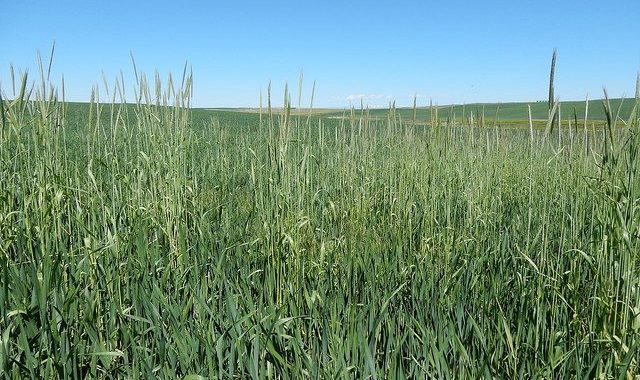Cereal rye can help manage weeds through its allelopathic effects and biomass coverage
FOLEY, Minn. — With wide-spread issues of management for waterhemp in the area, it has become more important that we integrate different weed management strategies into our programs. This includes the use of non-chemical strategies to help manage this problematic weed. The use of cereal rye to help with weed suppression is one example.
While we tend to think of cereal rye as a grain and forage crop, it can also help with managing different weed species as a cover crop. Many of the weed species affected by cereal rye tend to fit in the small-seeded category such as common lambsquarters, redroot pigweed, etc. Cereal rye can help manage weeds through its allelopathic effects and biomass coverage. The allelopathic effect acts roughly like a residual herbicide and is inversely related to the size of the seed. This means that it will have a greater effect on small weed seeds like those from lambsquarters, versus large seeded weed species.
We must also consider cereal rye’s biomass production when looking at weed control. Because we need a fairly high level of biomass to have season long control (greater than 4ton/acre in some reports) we are not looking for the biomass to provide complete control of weed issues. Instead we can expect help with delaying emergence early in the season which can be useful when used with other weed management techniques.
As always remember that this is not a silver bullet and should not be treated as such. Other weed management tactics must be used in conjunction with cereal rye for season long suppression. A recent article from Iowa State showed reductions in size and growth with the integration of decreasing row width in soybeans, plus an aggressive herbicide program (Two pass system complete with residuals and 3 effective herbicide sites of action), and harvest weed seed control. There are other options that can be considered such as integrating in mechanical weed control (Rotary Hoe, Tine Weeding) and hand harvesting weeds from fields. No matter which direction you wish to go integration of multiple effective weed management strategies is necessary to help prevent waterhemp from becoming a major on-farm issue.
For more information please feel free to contact me at (608) 515-4414 or through email at ndrewitz@umn.edu. The information I used in this article is from “Will a cereal rye cover crop suppress your weeds?”, “Using Cereal Rye Crop and Narrow-Row Soybean to Manage Herbicide-Resistant Waterhemp”, from the Iowa State Integrated Crop Management News and “Strategies and Consideration for Termination of Cereal Rye Cover Crop” from the University of Wisconsin Weed Science.
To receive future events, educational programming, and agronomic updates by email, signup at z.umn.edu/tricountysignup. In addition, if you would like to provide input for future local extension programming in Stearns, Benton, and Morrison counties please fill out the survey at z.umn.edu/tricountycrops
Last modified: 11/02/2020










